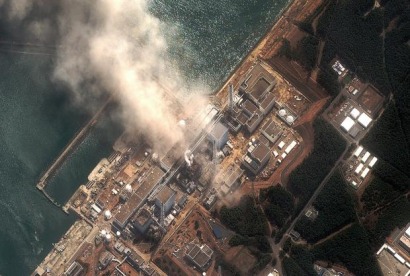
Four months after the earthquake, 40,000 tsunami survivors still populate over 175 shelters; many have lost family members and have no home to return to. Many have lost their livelihoods. The national government and local aid agencies are helping the homeless resettle in temporary housing and covering daily living expenses. Some will move in with relatives in other parts of the country, but sadly, many survivors have nowhere to turn.
We have many lessons to learn from the tsunami and subsequent nuclear radiation release. I hope that one outcome is to expedite the development of renewable energy technologies so that the world need not depend so much on nuclear power in the future. Indeed, there are signs that a number of countries are re-examining their nuclear power policies and taking a fresh look at solar, wind, and other alternative energy sources. (See my May 27, 2011, Renewable Energy Magazine article, Will the Fukushima Disaster Spark Growth in Sustainable Energy Investments?)
A key factor in the radiation release, according to a recent story in the New York Times (‘Safety Myth’ Left Japan Ripe for Nuclear Crisis, by Norimitsu Onishi, June 24, 2011), was the widespread acceptance of the so-called “safety myth” – that Japanese nuclear plants are absolutely safe. This unquestioned belief resulted in a failure of government regulators and plant operators alike to implement safety measures and adopt the latest emergency response technology, such as specialized robots for entering high radiation areas.
Curiously, Japan, the world’s leading innovator in robot technology, had to rely on an emergency shipment of nuclear-plant inspecting robots from a U.S. company that is more famous for its vacuum cleaners (www.irobot.com), and a remotely-operated emergency water pump had to be imported from China.
Nevertheless, the crisis seems to have caused a surge in energy innovation, including research on cheaper and more effective LED lights and low-energy cooling fans. And in cooperation with the U.S. National Science Foundation, the Japan Science and Technology Agency has embarked on a program to develop innovative disaster prevention and relief technology such as sonar-equipped undersea robots to investigate debris in harbors and to search for bodies. Other joint projects will involve high-tech logistics systems for relief supplies and unique remote sensing technology for investigating earthquake faults.
To counter the expected summertime energy shortage and potential blackouts, Japan’s Seven & I Holding Company is investing $125 million in solar panels and other energy efficiency technologies at its 1,000 7-Eleven stores. Additionally, to draw attention to the impending energy crisis as a number of nuclear power plants remain out of service, the public broadcaster NHK is now providing daily electricity forecasts. Perhaps a positive outcome of the disaster will be the acceleration of renewable energy installations and a reinvigoration of alternative energy research.
Lessons from past disasters are sometimes forgotten, and history repeats itself. There is a 600-year-old stone marker on a hillside near the devastated coastal city of Kesennuma that warns residents (translated):
Always be prepared for unexpected tsunamis.
Choose life over your possessions and valuables.
If an earthquake comes, beware of tsunamis.
High dwellings are the peace and harmony of our descendants; remember the calamity of the great tsunamis.
Do not build any homes below this point.
This warning went unheeded, and the city was destroyed. Hopefully, as Kesennuma is reconstructed, precautions will be taken for the next tsunami. (YouTube video of Kesennuma tsunami).
Many Japanese are struggling, uncertain about the future. But a new optimism and public spirit seems to be spreading – a “can-do” attitude that their problems will be overcome and the nation will emerge stronger than ever. Some observers liken this to the post-war period, when tremendous strides were made in rebuilding Japan and establishing new industries. A sign of Japanese determination to overcome the current crisis is the government’s new commitment to renewable energy, including a plan to install roof-top solar collectors throughout the country and to rebuild the devastated coastal cities as showcases for wind, solar, and geothermal energy.
One lesson is clear: If anyone can overcome adversity, it is the Japanese.
Note: If you read my previous blog on the wisdom of natural gas development and still have doubts, be sure to see the June 25, 2011, New York Times article, “Insiders Raise Alarm Amid a Natural Gas Rush,” by Ian Urbina.

